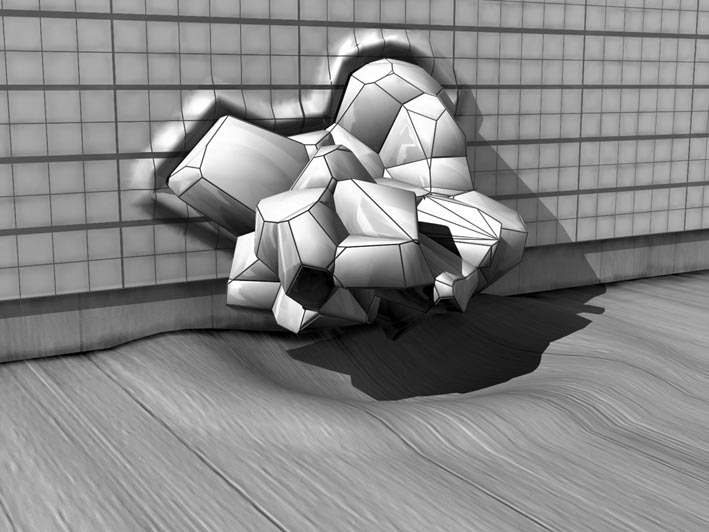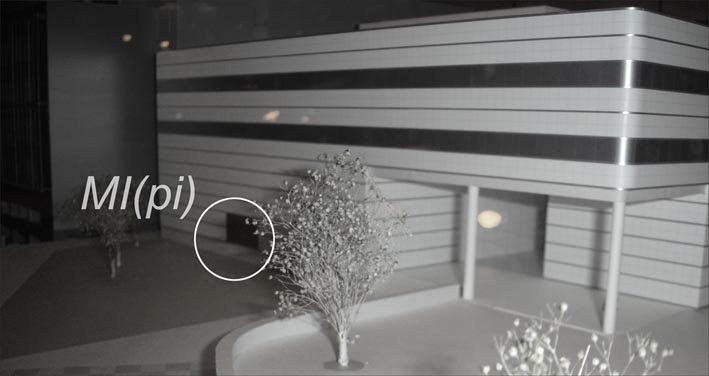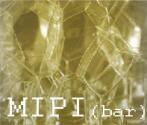
Fiction as practice
thingswhichnecrose<< / >> iceinflatable

MI(pi) bar / MIT (massachussets institute of technology)
R&Sie(n) architects / Paris / 2007 / Exibition of the MI(pi)bar project in List Visual Art Center just now
MOVIE (quicktime, 2,5 mo)
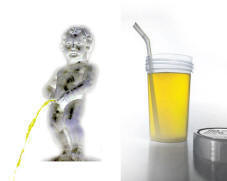
Preamble
Urinotherapy is a process described in the chapters of the Indian Damar Tantra, a five thousand year old Sanskrit text in which the god Shiva explains to his companion, Parvati, all the different regenerative virtues of urine.
Containing healing properties generated through auto-mithridatization, urine is a byproduct – rather than a residue or waste – of the body’s blood filtration system.
Contrary to popular belief, urine is completely sterile when it leaves the body.
Urine is in fact a purified derivative of the blood produced by the kidneys, whose principal function is not the excretion of waste but the regulation and balance of the blood’s various components. The kidneys eliminate substances not because they are toxic or dangerous for the body but because, at that particular moment, the body does not require them to achieve equilibrium. Only urea is considered a waste product, making up just 2.5% of urine’s content. But even this latter substance, if it is reabsorbed, transforms itself into glutamine, a substance that is beneficial for the body.
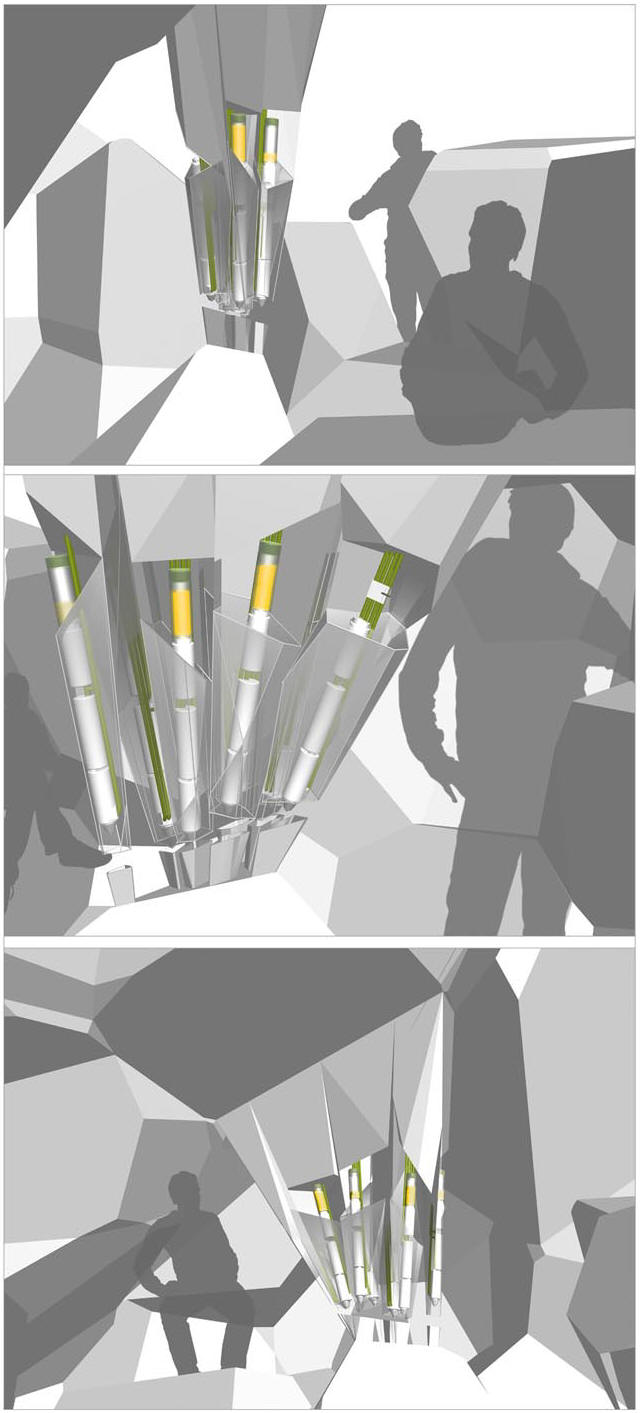
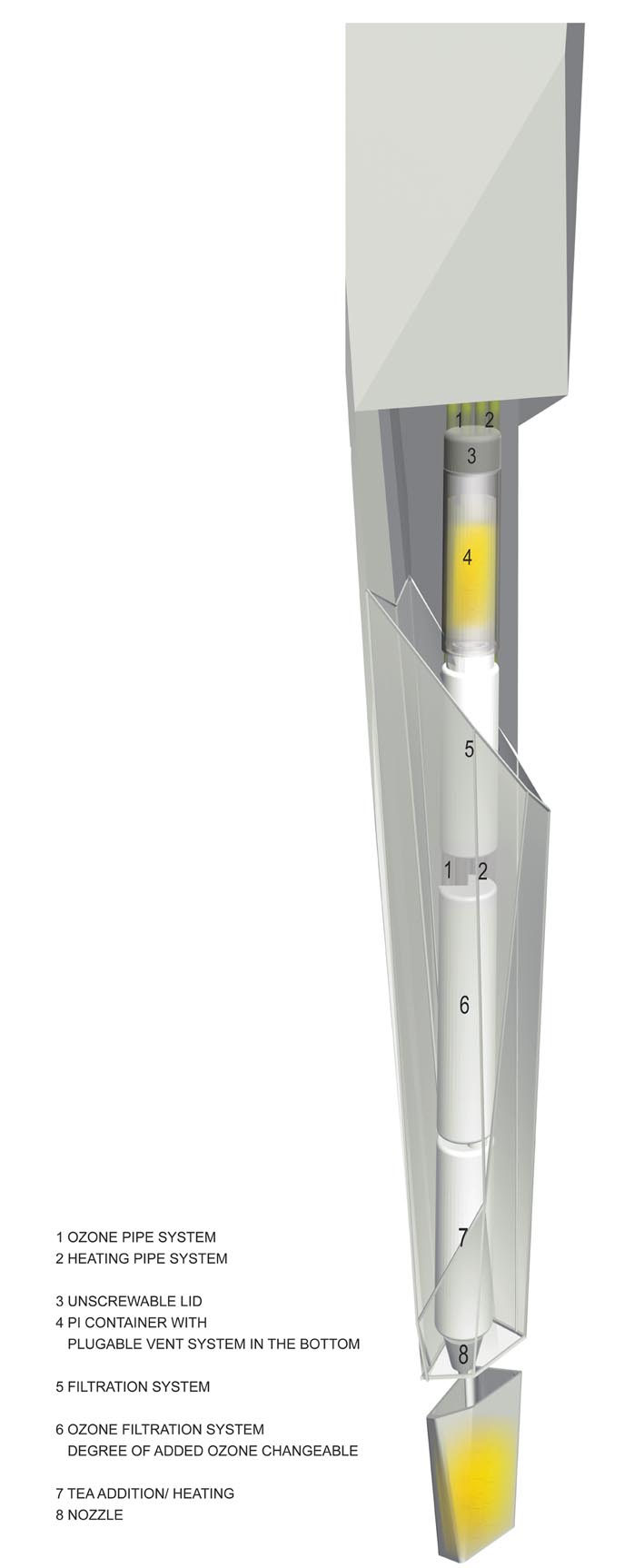
Mi(pi)
MIT, Boston, USA, 2007
Architecte : New-Territories / R&Sie(n)…Equipe créative : François Roche, Stéphanie Lavaux
Scripts : Julien BlervaqueSurface : 20 m2
Client : Massachusetts Institute of Technology, Cambridge (MIT)Coût : 300 000 $
Scenario:1) Drinking one’s own urine could trigger a healing process of auto-mithridatisation, as it is a byproduct - rather than a residue or waste - of the body’s blood filtration system.
2) Exploiting of fears and anxieties about toxicity of bodily fluids, their assumption and exchange.3) Think about a filtering machine and a protocol of use able to avoid disgusting and “dangerous” mixings of dejections.
4) Introducing suspicion about technology effectiveness.5) Scummy excrescence as a morphological distortion of the hygienist-tiled white immaculate surface of the I.M. Pei’s MIT building to access to this paranoia. The clean approach to cognitive sciences is facing our bestiality, our human loop of digestive substances and dualities;
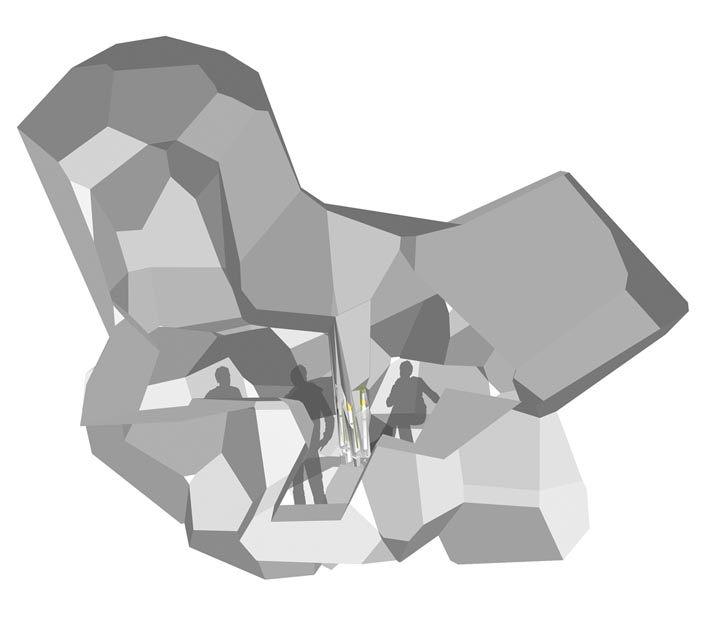

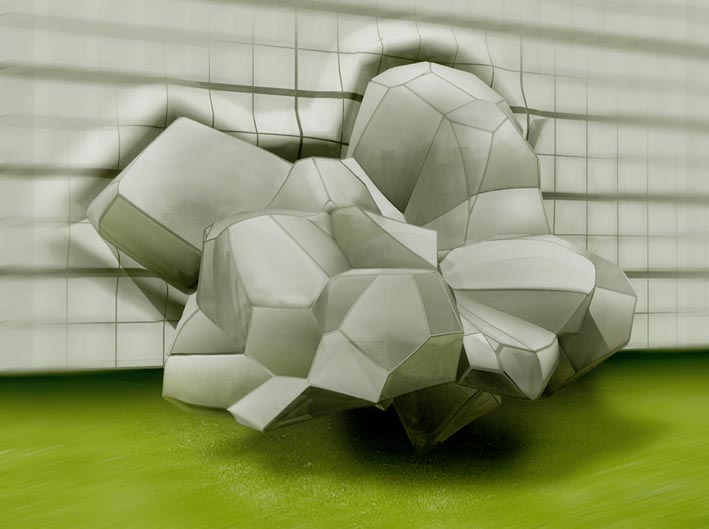
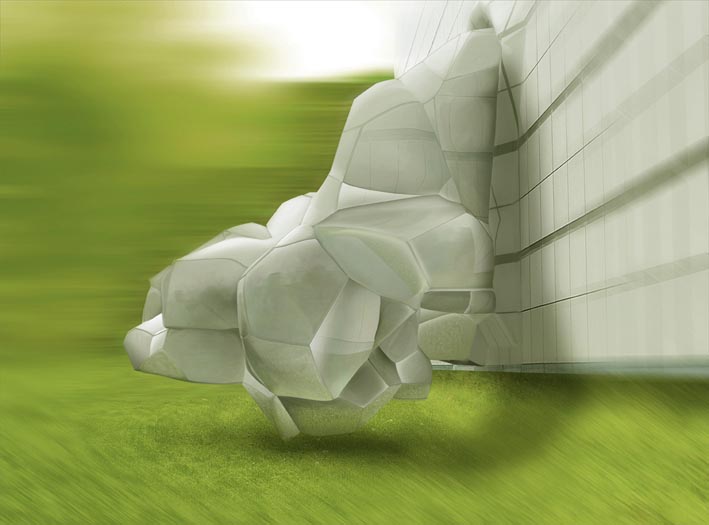
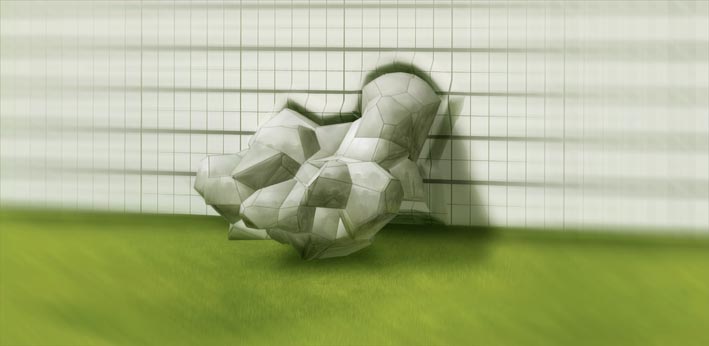
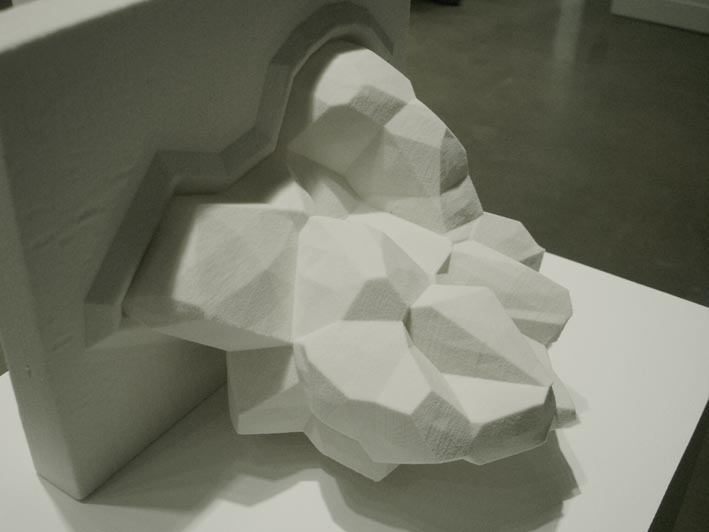
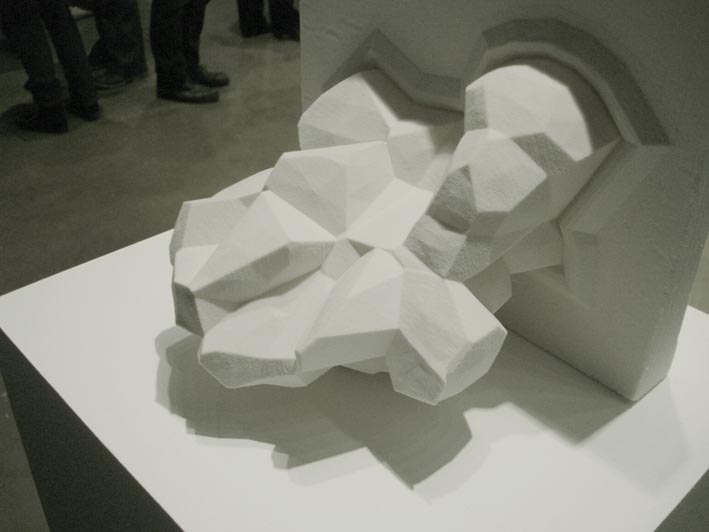
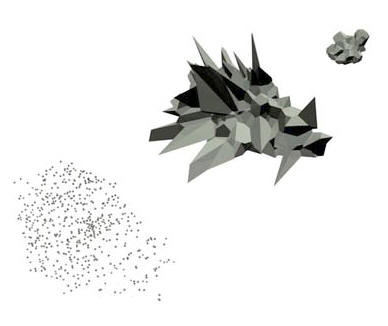

The MI(pi) bar offers the unique possibility of generating an immuno-substance (as in “immunology”) through a conceivably infinite process of absorption, digestion, excretion, and re-absorption. Its purpose is to offer a means of reintroducing the body’s chemical makeup as a positive entity, and one with which we must now engage and negotiate.
In this era in which the ideas of sustainable development, recycling, and reintegrating industrial byproducts have become the ideological framework of our future, it is no accident that, parallel to this, as a kind of reflexive vision of imminent danger, we must apply this same set of processes to the operations and matter of the human body.
Social assumptions about risks, especially when related to food and digestion, unleash our worst fears and anxieties, sap our will and fill us with doubt. In other words, we can comfortably discuss the future of the planet, and the ethical and moral transformation that it requires of us, but only on the condition that we are not personally implicated in the process.
In contrast, at the MI(pi) bar, to reabsorb the liquids of one’s own body is to perceive the physiological interdependence between the body, social structures, raw materials, and elemental matter.
Triggering disgust and suspicion towards the fallibility of technology, the MI(pi) bar is thus a space not just of exchange, but of the exchange of bodily fluids, and intestinal and digestive substances.
This psycho-physiological dimension provides a means of recognizing the central place we each occupy at the heart of the global machine of industrial production, at the center of the global rubbish heap that we must now renegotiate and resolve.
A critical element of the MI(pi) bar, the reflex of repulsion, induces fears of toxicity, fears of the corporeal Other; fears that, in this particular case, are not actually justified.
The variation introduced here, the infusion of tea as an alternative to urine, is thus not intended to reduce potential danger – there is absolutely no danger if the urine is fresh and one’s own and if one’s daily consumption does not exceed 20 centiliters (or 6.76 ounces US). Using tea rather than urine is intended as a means of reducing paranoia so that users may gradually adjust to and move beyond the psychological blocks they may experience.
The adjustable dimmer switch allows users to modify the degree of purity from 0% to 100%: at 100%, the tea becomes totally infused with still water and is totally sterile. Witnessing the psychologically gratifying detoxification process allows users to address and work through fears of undertaking the process themselves.
However, we do not advise persons with kidney or urinary tract problems to experience the process directly without consulting their doctor.
Method of exchange
Preamble:
The individual containers will be accessible at the List Visual Arts Center. They will be pre-engraved with the name of the bio-user and will be used only by that individual.
Each MI(pi) bar bio-user will urinate preferably in the morning when the urine is rich in melatonin. The user will fill their individual container with between ten and fifteen centiliters (3.38 and 5.07 ounces US), using the urine from the middle phase of the void, the beginning part of the stream considered as a cleansing wash of the genital area. On the same day, the bio-user will take the sample to the MI(pi) bar and place it in the refrigerator. Once within the MI(pi) bar, the bio-user will follow the instructions for using the machine, which is stalactite-like in shape and which is located in the center of the space.
User manual:
1 Clean one of the seven tea infusers by pressing the button “Wash My Filter”
2 Use the adjustable dimmer switch to determine the desired degree of filtration from 0% to 100%
3 Place the container in the cavity designed for this purpose (the central stalactite-shaped area)
4 Remove an individual teacup and saucer, as well as a tea bag from the vertical dispensers (self service)
5 Start filtration and infusion of tea by pressing the button “MI(pi)”
6 Select a seat of your choice in the bar’s geometric interior
Chemical composition
95% Water
Non-organic substances: bicarbonate, chloride, phosphorus, sulfur, bromide, fluoride, iodine, sodium rhodanide, potassium, natroniobite, calcium, magnesium, iron, zinc, cobalt, selenium, arsenium, lead, mercury
Nitrogen-based substances: nitrogen, urea, creatine, creatinine, guanidine, choline, carnitine, piperidine, spermidine, dopamine, adrenalin, norepinephrine, serotonin, tryptamine, bilirubin
Amino acids: alanine, carnosine, glycine, histidine, leucine, lysine, methionine, phenylalaline, serine, tyrosine, valine, xylosylserine
Proteins: albumen, haptoglobin, immunoglobulin
Enzymes: gamma-glutamyl-transferase, alpha amylase, uropepsinogene, lysozyme, urokinase
Carbon dioxide hydrate: arabinose, fucose, rhammose, ketopentose, glucose, galactose, mannose, fructose, saccharose, fucosylglucose, raffinose
Substances lacking nitrogen: organic acids
Vitamins: thiamine B1, riboflavin B2, B6, nicotinic acid, B12, bioterin
Hormones: luteinizing hormone, corticotropin, prolactin, lactogenic hormones, oxytocin, vasapressine, thyroxine, catecholamines, insulin, erythropoietin, corticosteroids, testosterone, estrogen
Agglutinins: neutralize poliomyelitis
Allantoine: favors healing
Acid blocker: prevents stomach ulcers
H-11, HUD, Interleukin-1: inhibits the growth of cancerous cells
Prostaglandin: dilates blood vessels, relaxes the muscles of the bronchial tubes and stimulates contractions
Retinol: cancer preventing
The filtration and infusion system
Composed of several elements:
- Running water for the bar’s cleaning system (piped from the building’s plumbing system)
- Filter cartridge (removable)
- Ozone generator, ozone controller
- Ozone destroying unit
- Ozone dimmer switch that modifies the desired degree of filtration
- Small oxygen bottle (made of carbon fiber) to power the ozone generator
- Heating system for tea water
- Subfloor draining system (situated beneath the tea cups)
The urine is filtered by a carbon filter (or ceramic filter) and cleaned by ozone gas injected in the liquid itself. The dimmer switch adjusts the ozone level (from 0% to 100% ozone gas spray).
The system filters at rate of about one liter (or seven cups of tea) per minute.
Because ozone has a short life, it cannot be stored. For this reason, we have designed an ozone generator (400 x 400 x 400 mm; 15.75 x 15.75 x 15.75 in) as well as an oxygen bottle (500 x 200 mm; 19.69 x 7.85 in) to power the generator; both are located in a specific compartment on the outer facade.
Materials
The MI(pi) bar will be built of clay faience and inflatable, suggesting a morphological distortion of the tiled exterior of Pei building. The bar’s interior is covered by white leather upholstery, easily removable and washable.
Cost
The MI(pi) bar
- Construction: $200,000
- Filter, cleaning process, including tea and containers: $30,000
- Miscellaneous (drain, utility connection with existing building): $20,000
- Fees for design and technical research: $50,000
- Total Cost: $300,000
Geometry
The Voronoi geometry of the MI(pi) bar has been specifically developed and scripted for Rhinoceros software by Julien Blervaque on a Qhull pre-existing script in C++.
Purpose:
QHull Interface is a bridge between Rhino and QHull, a free mathematical library implementing Delaunay and Voronoi 3D computations.
Interface GUI is made of 4 buttons, gathered in a toolbar in Rhino, allowing export and import of points.
File formats:
-QHull Input 2D (*.qi2) and 3D (*.qi3): points exported from Rhino and required by QHull for computation
-QHull Output (*.qou): files created by QHull and containing Voronoi data and other computations
-Parameters (*.txt): contains user parameters as a string
QHull; Barber, C.B., Dobkin, D.P., and Huhdanpaa, H.T., "The Quickhull algorithm for convex hulls," ACM Trans. on Mathematical Software, Dec 1996, Contact and feedback http://www.qhull.org
Rhino Qhull interface; A WerwacK script for Rhino R3.x Contact and feedback: werwack@yahoo.com;
The process is explained in the accompanying drawings.
MIT Campus. Mi(pi) Bar is a proposed extension of I.M. Pei's Wiesner Building (1985)
